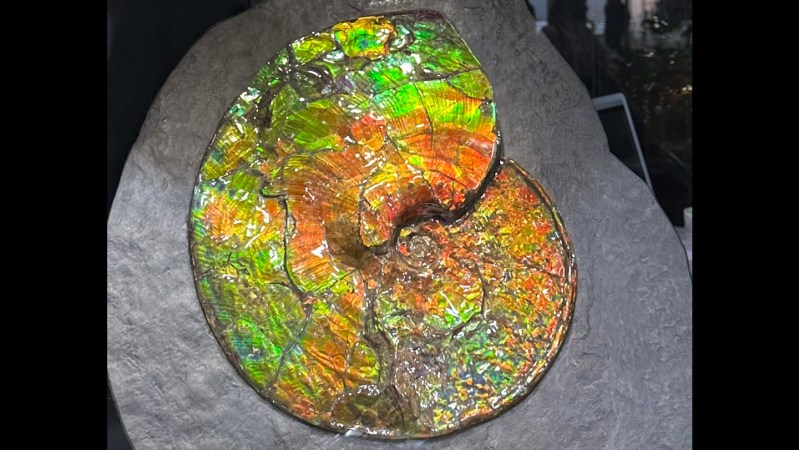Research conducted by a team of scientists has shed light on the captivating colors of ammolite, a rare gemstone derived from the fossilized shells of ancient ammonites. The findings, published on October 30, 2023, in Scientific Reports, explain the unique optical properties that give ammolite its vibrant, rainbow-like shimmer.
Ammolite is formed from the layers of nacre, commonly known as mother-of-pearl, found in ammonite fossils. While it is clear that nacre plays a significant role in the gemstone’s appearance, not all ammonite fossils exhibit such vivid colors. To uncover the mystery, the research team analyzed the aragonite crystal plates that comprise the nacre of ammolite, along with the nacre layers of nautilus and abalone shells.
The research revealed that the striking colors of ammolite arise from light reflecting off aragonite layers that are uniform in thickness, separated by precisely measured gaps. These findings have important implications for understanding the conditions under which different ammonite species produce rich colors.
Discovering the Mechanism Behind the Colors
Led by Hiroaki Imai from Keio University in Yokohama, Japan, the team began their investigation after Imai was captivated by ammolite at a mineral fair in Tokyo. Initially thinking that the colors might result from a special coating, he was surprised to discover that the vibrant hues were intrinsic to the fossil itself.
Using advanced electron microscopes, the researchers examined ammolite specimens sourced from the 75-million-year-old Bearpaw Formation in Alberta, Canada. Their analysis revealed that thinner aragonite plates reflected shorter wavelengths of light, producing deep blues, while thicker plates reflected longer wavelengths, resulting in rich reds.
The team also identified significant differences in the microscopic structures of ammolite compared to duller nacres. In ammolite, the aragonite plates were separated by 4-nanometer air pockets, while abalone shells contained 11-nanometer thick layers of organic material. Notably, a less vibrant ammonite fossil from Madagascar featured plates that had collapsed tightly together, diminishing its color.
The Sweet Spot for Color
Further simulations indicated that the 4-nanometer gaps are ideal for producing bright, distinct colors. Plates that are more closely packed do not allow as much light to be reflected, leading to a dull appearance. Conversely, wider gaps result in a broad distribution of wavelengths, which can muddy the perceived color.
The researchers found that the thickness of the layers in a single piece of ammolite tends to remain consistent, contributing to the gemstone’s brilliance. Imai suggested that the color variations among ammonite fossils can depend on both the species and the conditions under which they were preserved.
Looking ahead, Imai’s team plans to investigate silica gemstones known as opals, which form through the weathering of rocks. Some types of opal also display vivid structural colors. Imai explained, “We are currently investigating whether the principles governing these vivid colors can be similarly explained.”
This breakthrough in understanding the optical properties of ammolite not only enhances appreciation for this unique gemstone but could also inform future studies in gemology and materials science.
